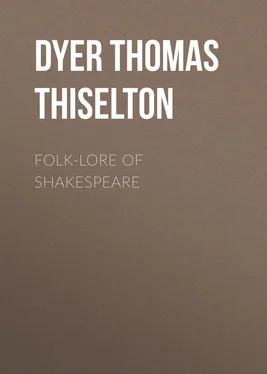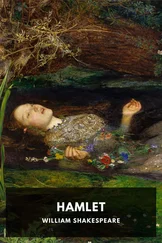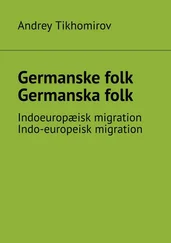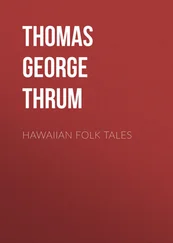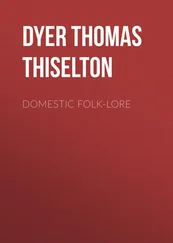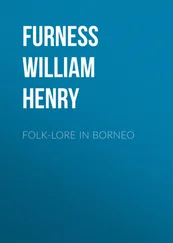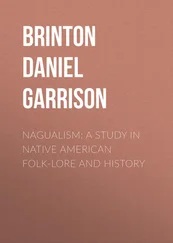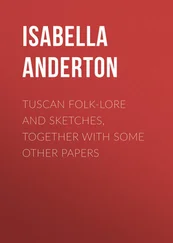Thomas Dyer - Folk-lore of Shakespeare
Здесь есть возможность читать онлайн «Thomas Dyer - Folk-lore of Shakespeare» — ознакомительный отрывок электронной книги совершенно бесплатно, а после прочтения отрывка купить полную версию. В некоторых случаях можно слушать аудио, скачать через торрент в формате fb2 и присутствует краткое содержание. Жанр: foreign_antique, foreign_prose, на английском языке. Описание произведения, (предисловие) а так же отзывы посетителей доступны на портале библиотеки ЛибКат.
- Название:Folk-lore of Shakespeare
- Автор:
- Жанр:
- Год:неизвестен
- ISBN:нет данных
- Рейтинг книги:4 / 5. Голосов: 1
-
Избранное:Добавить в избранное
- Отзывы:
-
Ваша оценка:
- 80
- 1
- 2
- 3
- 4
- 5
Folk-lore of Shakespeare: краткое содержание, описание и аннотация
Предлагаем к чтению аннотацию, описание, краткое содержание или предисловие (зависит от того, что написал сам автор книги «Folk-lore of Shakespeare»). Если вы не нашли необходимую информацию о книге — напишите в комментариях, мы постараемся отыскать её.
Folk-lore of Shakespeare — читать онлайн ознакомительный отрывок
Ниже представлен текст книги, разбитый по страницам. Система сохранения места последней прочитанной страницы, позволяет с удобством читать онлайн бесплатно книгу «Folk-lore of Shakespeare», без необходимости каждый раз заново искать на чём Вы остановились. Поставьте закладку, и сможете в любой момент перейти на страницу, на которой закончили чтение.
Интервал:
Закладка:
“The Scottish barnacle, if I might choose,
That of a worme doth waxe a winged goose.”
Butler, too, in his “Hudibras” (III. ii. l. 655), speaks of it; and Marston, in his “Malecontent” (1604), has the following: “Like your Scotch barnacle, now a block, instantly a worm, and presently a great goose.”
Blackbird. This favorite is called, in the “Midsummer-Night’s Dream” (iii. 1) an ousel (old French, oisel ), a term still used in the neighborhood of Leeds:
“The ousel cock, so black of hue,
With orange-tawny bill.”
In “2 Henry IV.” (iii. 2) when Justice Shallow inquires of Justice Silence, “And how doth my cousin?” he is answered: “Alas, a black ousel, 156 156 See Yarrell’s “History of British Birds,” 2d edition, vol. i. p. 218; “Dialect of Leeds,” 1862, p. 329. In “Hamlet” (iii. 2), some modern editions read “ouzle;” the old editions all have weasel , which is now adopted.
cousin Shallow,” a phrase which, no doubt, corresponded to our modern one, “a black sheep.” In Spenser’s “Epithalamium” (l. 82), the word occurs:
“The ousel shrills, the ruddock warbles soft.”
Buzzard. Mr. Staunton suggests that in the following passage of the “Taming of the Shrew” (ii. 1) a play is intended upon the words, and that in the second line “buzzard” means a beetle, from its peculiar buzzing noise:
“ Pet. O slow-wing’d turtle! shall a buzzard take thee?
Kath. Ay, for a turtle, as he takes a buzzard.”
The beetle was formerly called a buzzard; and in Staffordshire, a cockchafer is termed a hum-buz. In Northamptonshire we find a proverb, “I’m between a hawk and a buzzard,” which means, “I don’t know what to do, or how to act.” 157 157 Miss Baker’s “Northamptonshire Glossary,” 1854, vol. i. p. 94. See Nares’s “Glossary,” 1872, vol. i. p. 124; and “Richard III.,” i. 1.
Chaffinch. Some think that this bird is alluded to in the song in the “Midsummer-Night’s Dream” (iii. 1), where the expression “finch” is used; the chaffinch having always been a favorite cage-bird with the lower classes. 158 158 Harting’s “Ornithology of Shakespeare,” p. 144; Halliwell-Phillipps’s “Handbook Index to Shakespeare,” 1866, p. 187. The term finch, also, according to some, may mean either the bullfinch or goldfinch.
In “Troilus and Cressida” (v. 1) Thersites calls Patroclus a “finch-egg,” which was evidently meant as a term of reproach. Others, again, consider the phrase as equivalent to coxcomb.
Chough. In using this word Shakespeare probably, in most cases, meant the jackdaw; 159 159 See Yarrell’s “History of British Birds,” 2d edition, vol. ii. p. 58.
for in “A Midsummer-Night’s Dream” (iii. 2) he says:
“russet-pated choughs, many in sort,
Rising and cawing at the gun’s report;”
the term russet-pated being applicable to the jackdaw, but not to the real chough. In “1 Henry IV.” (v. 1). Prince Henry calls Falstaff chewet – “Peace, chewet, peace” – in allusion, no doubt, to the chough or jackdaw, for common birds have always had a variety of names. 160 160 Nares’s “Glossary,” vol. i. p. 156; Singer’s “Shakespeare,” 1875, vol. v. p. 115; Dyce’s “Glossary,” 1876, p. 77.
Such an appellation would be a proper reproach to Falstaff, for his meddling and impertinent talk. Steevens and Malone, however, finding that chewets were little round pies made of minced meat, thought that the Prince compared Falstaff, for his unseasonable chattering, to a minced pie. Cotgrave 161 161 Mr. Dyce says that if Dr. Latham had been acquainted with the article “Chouette,” in Cotgrave, he would not probably have suggested that Shakespeare meant here the lapwing or pewit. Some consider the magpie is meant. See Halliwell-Phillipps’s “Handbook Index to Shakespeare,” 1866, p. 83. Professor Newton would read “russet-patted,” or “red-legged,” thinking that Shakespeare meant the chough.
describes the French chouette as an owlet; also, a “chough,” which many consider to be the simple and satisfactory explanation of chewet . Belon, in his “History of Birds” (Paris, 1855), speaks of the chouette as the smallest kind of chough or crow. Again, in “1 Henry IV.” (ii. 2), in the amusing scene where Falstaff, with the Prince and Poins, meet to rob the travellers at Gadshill, Falstaff calls the victims “fat chuffs,” probably, says Mr. Harting, who connects the word with chough, from their strutting about with much noise. Nares, 162 162 “Glossary,” vol. i. p. 162; Singer’s “Notes to Shakespeare,” 1875, vol. v. p. 42.
too, in his explanation of chuff , says, that some suppose it to be from chough, which is similarly pronounced, and means a kind of sea-bird, generally esteemed a stupid one. Various other meanings are given. Thus, Mr. Gifford 163 163 Massinger’s Works, 1813, vol. i. p. 281.
affirms that chuff is always used in a bad sense, and means “a coarse, unmannered clown, at once sordid and wealthy;” and Mr. Halliwell-Phillipps explains it as spoken in contempt for a fat person. 164 164 “Handbook Index to Shakespeare,” 1866, p. 86.
In Northamptonshire, 165 165 Miss Baker’s “Northamptonshire Glossary,” 1854, vol. i. p. 116.
we find the word chuff used to denote a person in good condition, as in Clare’s “Village Minstrel:”
“His chuff cheeks dimpling in a fondling smile.”
Shakespeare alludes to the practice of teaching choughs to talk, although from the following passages he does not appear to have esteemed their talking powers as of much value; for in “All’s Well That Ends Well” (iv. 1), he says: “Choughs’ language, gabble enough, and good enough.” And in “The Tempest” (ii. 1), he represents Antonio as saying:
“There be that can rule Naples
As well as he that sleeps; lords that can prate
As amply and unnecessarily
As this Gonzalo; I myself could make
A chough of as deep chat.”
Shakespeare always refers to the jackdaw as the “daw.” 166 166 “Coriolanus,” iv. 5; “Troilus and Cressida,” i. 2; “Much Ado About Nothing,” ii. 3; “Twelfth Night,” iii. 4; “Love’s Labour’s Lost,” v. 2, song; “1 Henry VI.” ii. 4.
The chough or jackdaw was one of the birds considered ominous by our forefathers, an allusion to which occurs in “Macbeth” (iii. 4):
“Augurs and understood relations have,
By magot-pies and choughs and rooks brought forth
The secret’st man of blood.”
At the present day this bird is not without its folk-lore, and there is a Norwich rhyme to the following effect: 167 167 Swainson’s “Weather-Lore,” 1873, p. 240.
“When three daws are seen on St. Peter’s vane together,
Then we’re sure to have bad weather.”
In the north of England, 168 168 Henderson’s “Folk-Lore of Northern Counties,” 1879, p. 48.
too, the flight of jackdaws down the chimney is held to presage death.
Cock. The beautiful notion which represents the cock as crowing all night long on Christmas Eve, and by its vigilance dispelling every kind of malignant spirit 169 169 See Douce’s “Illustrations of Shakespeare,” p. 438.
and evil influence is graphically mentioned in “Hamlet” (i. 1), where Marcellus, speaking of the ghost, says:
Интервал:
Закладка:
Похожие книги на «Folk-lore of Shakespeare»
Представляем Вашему вниманию похожие книги на «Folk-lore of Shakespeare» списком для выбора. Мы отобрали схожую по названию и смыслу литературу в надежде предоставить читателям больше вариантов отыскать новые, интересные, ещё непрочитанные произведения.
Обсуждение, отзывы о книге «Folk-lore of Shakespeare» и просто собственные мнения читателей. Оставьте ваши комментарии, напишите, что Вы думаете о произведении, его смысле или главных героях. Укажите что конкретно понравилось, а что нет, и почему Вы так считаете.
